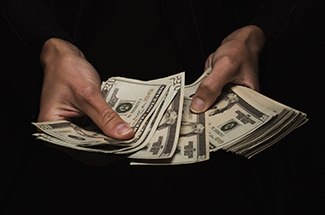Money Laundering Explained
August 24, 2018

An Overview of Money Laundering by Your CPA Team in Rochester, NY
Money laundering quickly catches attention in headlines and breaking news. But how does it actually work? The process is complicated and takes many steps, but we’ve broken it down for you to make it a little less daunting
Placement
The first step in money laundering is placement. This is when criminals place their illegally gained money into the financial system. It is typically the riskiest step for criminals since they do not want to be detected by banks, law enforcement agencies, or other financial institutions. To avoid detection, criminals deposit the money in smaller amounts to dodge the reporting requirements for banks. Another strategy used by criminals is combining the illegally gained money with legal income and depositing them together. For example, criminals often disguise illegal money as “revenue” from a legitimate business, like a restaurant or bar, to make the deposit look legitimate.
There are five different ways funds are typically illegitimately placed into the financial system:
- Loan Repayment – paying back loans or bills with the illegal funds.
- Gambling – placing bets or purchasing chips on events.
- Currency Smuggling – physically transferring money over a border.
- Currency Exchanges – using currency exchanges to purchase foreign money.
- Blending Funds – mixing legitimate sales funds with illegitimate money.
Layering
Once the money is in the system, the criminals start to layer the money. In other words, they start to move the funds between banks, accounts, financial institutions, and most often countries. This makes it much more difficult to trace the origin of the money. It also hides the paper trail of the origins of the funds. This stage is, by far, the most complicated step in the system.
Some criminals will use “shell companies” as foreign accounts. These are “entities that have no physical presence apart from a mailing address and generate no independent economic value” as defined in USA Today’s article.
Integration
The final step is integration. This is when the criminal removes the funds from the financial system. At this point, they are disguised as legitimate funds since they were initially placed as cash that moved through financial institutions and became fully integrated. Typically, the criminal uses the funds to purchase property, art, high-end vehicles, and other items of high value. This helps the criminal since it does not draw as much attention to them.
Criminals take a lot of steps to disguise their work, yet there are still lots of warning signs to help spot launderers. For example:
- Reluctance to share information.
- Inconsistent information
- Strange transactions and transfers.
- Inexplicably complicated group structures.
- Increased deposits without explanation or identifiable customers.
- Frequent cash transactions just under the reporting limit for banks, $10,000.
While we’ve captured the basic overview, it is always changing. With new technology, changes in the real estate market, and other developments, it keeps forensic accountants on their toes. Have more questions? Or looking for help? Visit our Fraud Investigation page or contact us by calling 585-454-4161 or visiting our office in Rochester, NY.
